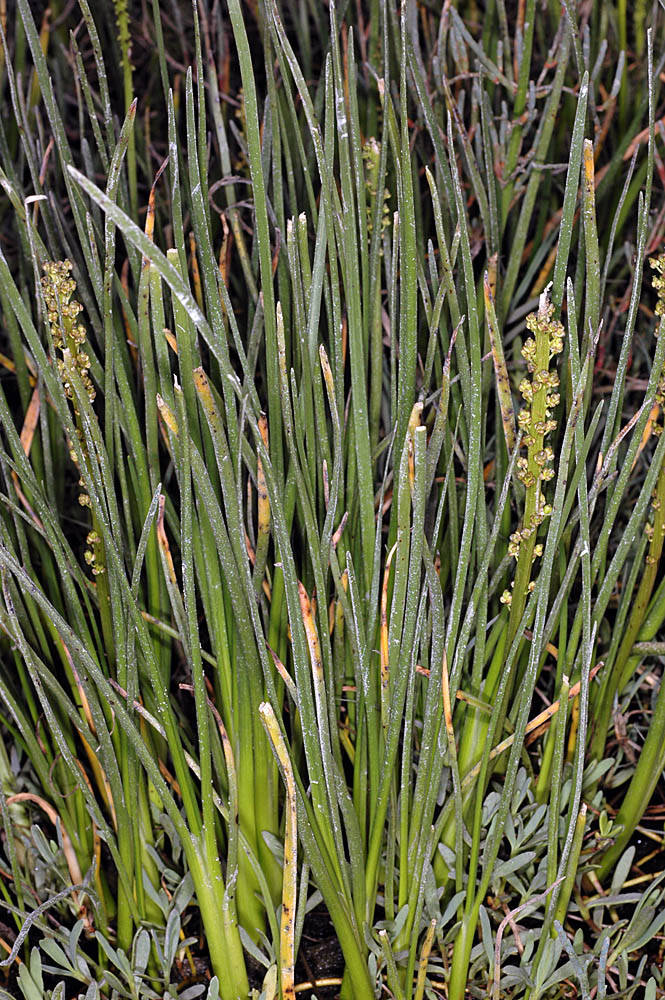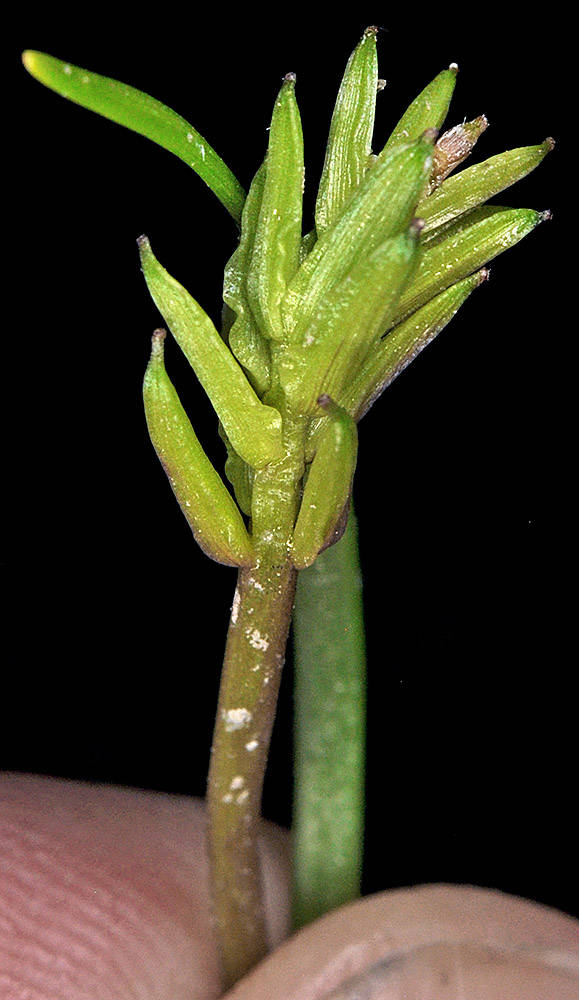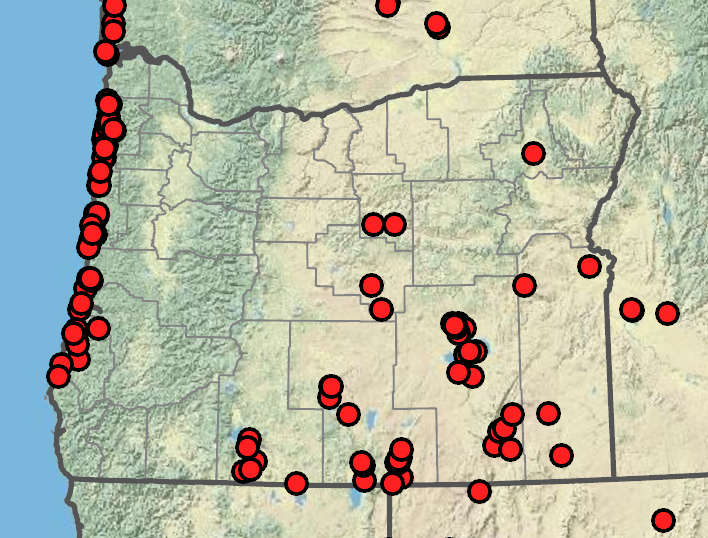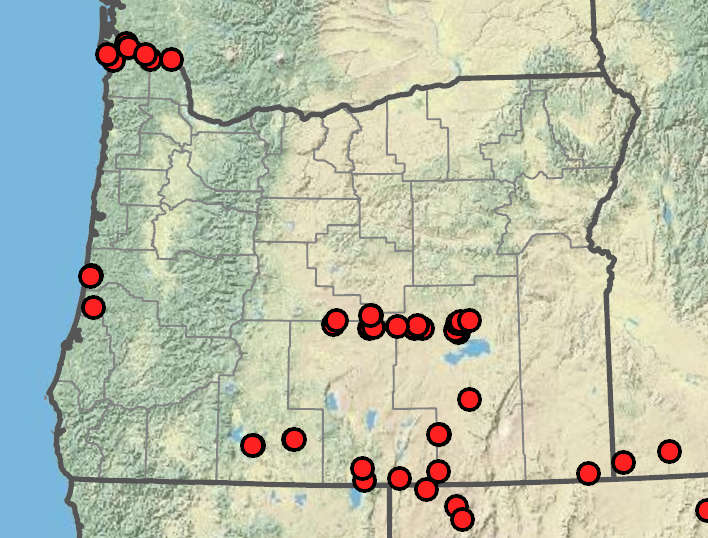Triglochin maritima
Triglochin scilloides
seaside arrow-grass
flowering quillwort
elliptical in cross section, 22–60 cm × 2–5 mm;
ligules entire to notched, 1–2 mm.
round in cross section, 9–35 cm × 1–9 mm;
ligules acute, 1–2 mm.
racemes exceeding leaves, 45–130 cm.
terminal spikes of unisexual and bisexual flowers shorter or longer than leaves in length, 3.5–25 cm; solitary pistillate flowers sessile in leaf axils.
ascending, 2–6 mm.
tepals 1.5–2 mm, fertile carpels 6.
tepals lacking.
generally above pistillate and bisexual flowers on racemes, with caducous bracts;
stamen 1.
solitary and sessile in leaf axils or mixed in with bisexual flowers on racemes; bractless;
pistil 1;
style elongating in fruit, 4–25 cm.
with caducous bracts;
stamen 1;
pistil 1.
schizocarps, oblong, 3–5 mm.
nutlets, 2–3 mm.
=12, 24, 30, 36, 48, 60, 120, 144.
=12.
Triglochin maritima
Triglochin scilloides
Coastal salt and inland freshwater marshes and moist meadows, especially brackish, saline, or alkaline areas. Flowering Apr–Aug. 0–1700m. BR, BW, CR, ECas, Est, Owy. CA, ID, NV, WA; throughout North America; South America; Asia, Europe. Native.
Triglochin concinna and T. maritima are frequently considered the same species; the treatment in Flora of North America synonymizes T. concinna with T. maritima (Haynes and Hellquist 2000). Both species produce a cyanide-containing sugar called triglochinin, which can poison livestock when eaten in large amounts. Production is highest in the spring (Majak et al. 1980), and because the compound remains potent in a dried state, care should be taken to prevent inclusion of young Triglochin in hay bales.
Vernal pools and other areas of shallow water and adjacent mud flats along lakes, ponds, and streams. Flowering Mar–Oct. 0–1900m. BR, ECas, Est. CA, NV, WA; north to Alberta, British Columbia, and Saskatchewan, east to MT, south to Mexico and South America. Native.
Triglochin scilloides is uncommon within Oregon’s borders but not considered immediately imperiled (ORBIC 2010). This taxon has faced taxonomic uncertainty throughout the years, most commonly considered a monotypic genus (Lilaea) within the Juncaginaceae, although occasionally placed in its own family (Lilaeaceae). Only recently has molecular work placed it firmly within the genus Triglochin (von Mering and Kadereit 2010).
Rachel Newton
Rachel Newton
- Local floras:
BC,
CA,
OR,
WA
- Local Web sites:
CalFlora,
CalPhotos,
Flora NW,
PNW Herbaria
WildflowerSearch
iNaturalist (observations)
USDA Plants Database
- LBJ Wildflower Center
- SEINet
- Plants of the World Online
- Encyclopedia of Life
- Wikipedia
- Google Image Search
- Local floras:
BC,
CA,
OR,
WA
- Local Web sites:
CalFlora,
CalPhotos,
Flora NW,
PNW Herbaria
WildflowerSearch
iNaturalist (observations)
USDA Plants Database
- LBJ Wildflower Center
- SEINet
- Plants of the World Online
- Encyclopedia of Life
- Wikipedia
- Google Image Search





